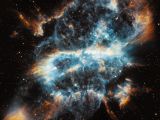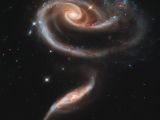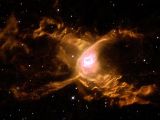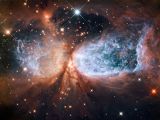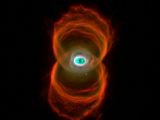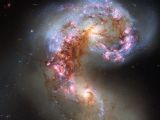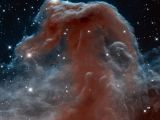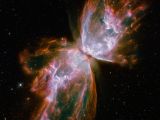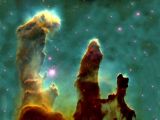First off, I do believe that I owe you a confession. So, here’s the deal: I’ve had a teeny tiny vacation this week, which means that, if you’re looking for the top 10 coolest science news of the week, you really should stop. You’re not going to find them.
Seeing how I’m not the kind of person not to try and make amends when breaking an otherwise perfect routine, I’ve decided that, since I can’t entertain you with the most important science news of the past few days, I might try and make it up to you by putting together a gallery of 10 of the coolest space images ever.
You can find the images I’ve picked below. They were all obtained with the help of the Hubble Space Telescope and shared with us mere mortals by the European Space Agency. Just in case you want to learn more about what these images are all about, I’ve also put together a short description for each of them.
These being said, there’s one last thing left to do: wish you one heck of a trip through space and then back again.
1. Distant galaxy is a Twister champion
Behold, a galaxy playing twister
The galaxy featured in this Hubble Space Telescope image goes by the name of ESO 510-G13. It sits at a distance of about 150 million light-years from our planet in the constellation Hydra.
Astronomers explain that it is a spiral galaxy. Thus, ESO 510-G13 is basically a flat, rotating disc that is made of stars. When compared to its outskirts, the galaxy’s core packs a higher concentration of stars.
This is yet to be confirmed, but scientists suspect that ESO 510-G13 owes its fairly bizarre twisted shape to the fact that, eons ago, it interacted with another galaxy that caused distortions in its anatomy.
2. Planetary nebula resembles a ribbon
Not the kind of ribbon you wear in your hair
The second image in the gallery shows a planetary nebula named NGC 5189. This nebula is estimated to be roughly 1,780 light-years from Earth. It is located in the constellation Musca and its shape resembles a ribbon.
In case anyone was wondering, planetary nebulae are basically expanding shells of gas ejected from giant stars towards the end of their life. Despite their name, they really don’t have anything to do with planets.
Thus, they only got this name because when astronomer William Herschel first observed them with the help of telescopes, their shape reminded him of the spherical figure of planets.
3. Galaxies get together to form a cosmic rose
Most awesome rose ever
Down here on Earth, roses might be red and violets might be blue, but in space, galaxies sometimes come together to form cosmic flowers that are best described as a colors and light bonanza.
Not to beat about the bush any longer, the third image in the gallery below shows two galaxies that are positioned in such a way that, when observed from afar, it kind of looks like they form a rose in bloom.
This pair of galaxies goes by the name of Arp 273. Astronomers say that this galactic rose is located at a distance of about 300 million light-years from us in the constellation Andromeda, and that the galaxy forming the bloom is about 5 times more massive than the other.
4. Nebula sports two perfectly sculpted lobes
The perfect body without ever going to the gym
Scientists like to call this stunning cloud of dust and all sorts of gases the Red Spider Nebula. They say that it sits some 3,000 light-years from Earth and that, when compared to other structures in space, its two lobes can only be described as perfectly sculpted.
Investigations have shown that this nebula has the compact core of a long-gone star, i.e. a white dwarf, at its center. This central white dwarf births freakishly powerful and super hot winds that in turn are causing the lobes to expand.
Interestingly enough, scientists with the European Space Agency say that the white dwarf at the core of this nebula is one of the hottest stars to have until now been documented and studied.
5. Mass of cloud and dust is birthing new stars
One day, planets will orbit these stars
Galaxies and nebulae are not the only things the Hubble Space Telescope has until now studied. On the contrary, astronomers have also used the telescope to take a sneak peek at star forming regions in the universe.
An image of one of these regions, dubbed Sh 2-106 or S106 for short, is included in our gallery. As detailed by astronomers, this compact star nursery sits in the constellation Cygnus, otherwise known as The Swan.
If the gas cloud featured in this image looks hourglass-shaped, that it because a newly formed star at its core has taken care of sculpting it. The same star is said to cause serious turbulence in its immediate proximity.
6. Nebula is shaped like an hourglass
It kind of looks like it's wearing a corset
About 8,000 light-years away, which is actually quite close as far as space distances go, a fairly young planetary nebula is now busy showing off its positively stunning hourglass-like figure.
The nebula is made up of several elements, of which nitrogen, hydrogen and doubly ionized oxygen are colored in red, green, and blue, respectively, in this Hubble Space Telescope image.
As if its perfect silhouette weren't enough to send some jaws on a one-way trip to the floor, the so-called walls of this planetary nebula display an oddly complex pattern of what astronomers refer to as etchings.
7. Distant galaxies are battling each other
One of the most epic battles ever
Several hundred years ago, the galaxies in this image got into a row and they've been battling each other ever since. Seeing how stars and gas are now stretching from these galaxies deep into space, the pair is known as the Antenae Galaxies.
What's mind-blowing about this pair of galaxies is the fact that, by the looks of it, they jumped at each other's throat with such determination that, since they first got into a fight until now, several stars have been pulled from their usual spot and have come to form an ark between them.
If you're wondering what the pink and red patches in this image are all about, wonder no more: they are clouds of gas surrounding star forming regions. These regions are depicted in blue.
8. Nebula looks like a giant seahorse
The Little Mermaid is probably nearby
Because of its shape, the nebula in this image is known as the Horsehead Nebula. It is located at a distance of about 1,500 light-years from our planet, in the constellation Orion.
It’s basically a freakishly big cloud of gas and dust that looks like a giant seahorse. Better yet, this seahorse-like cloud is rising from massive folds of gas and dust that sit at the base of the nebula and that astronomers say closely resemble waves.
To study the nebula's anatomy, scientists had to snap images of it in infrared light. This is because the dusty material surrounding it makes it impossible to have a look at its inner regions in visible light.
9. A cosmic butterfly this was comes
I wouldn't try to catch it if I were you
By now, you've probably figured out that space is teeming with oddly shaped dust clouds, galaxies and nebulae. Still, I have to say that I for one find this so-called Butterfly Nebula one of the wackiest things ever to form in the universe.
The two lobes of this nebula might resemble a butterfly's wings, but they are actually made of hot gas that is traveling through space at a speed of over 950,000 kilometers per hour (about 600,000 miles per hour).
The Butterfly nebula is located at a distance of about 3,800 light-years from Earth, in the constellation Scorpius. Astronomers say that it is one of the most complex nebulae to have until now been documented and studied.
10. Massive columns are actually stellar nurseries
Here, gas and dust and forming new stars
I don't know about you, but, from where I stand, this image showing several dust and gas columns usually referred to as the Pillars of Creation is the absolute best space picture ever.
The columns sit in the Eagle Nebula, about 7,000 light-years away from our planet, and scientists say that they are basically incubators for new stars. Thus, they are now busy turning the dust and gas included in their makeup into new stars.
Some folks say that these columns look like stalagmites rising from a cavern floor. Others argue that they resemble elephant trunks. Either way, one has to admit that they are nothing short of stunning.
Here's hoping that you've found the gallery to your liking, and be sure to check this page again next Sunday. It's back to business as usual, so the top 10 science news and announcements of the week will most definitely be waiting for you.
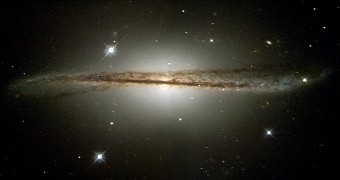
 14 DAY TRIAL //
14 DAY TRIAL // 
